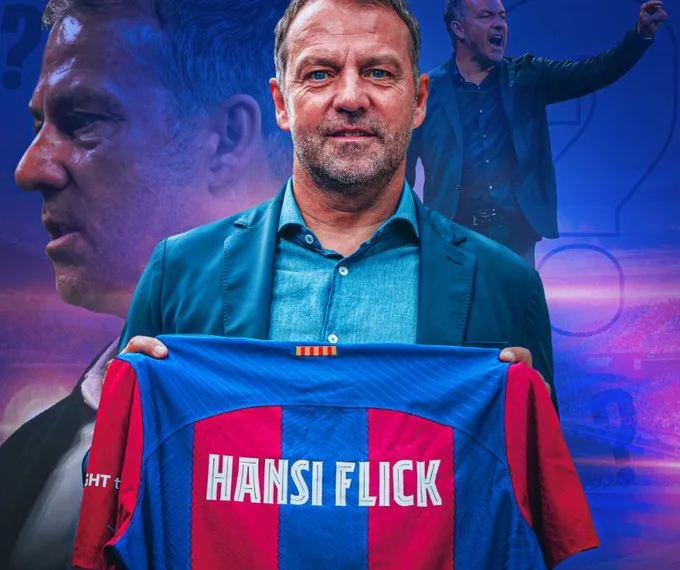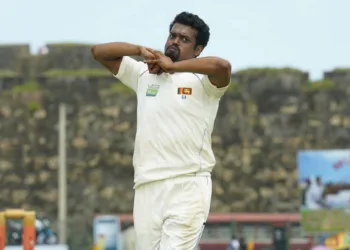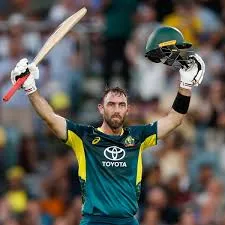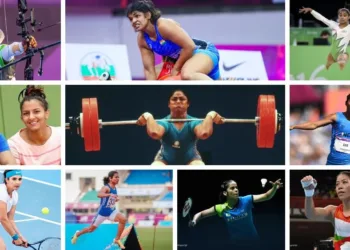FC Barcelona is undergoing a summer of transformation with the announcement of Hansi Flick as their new manager earlier this week.
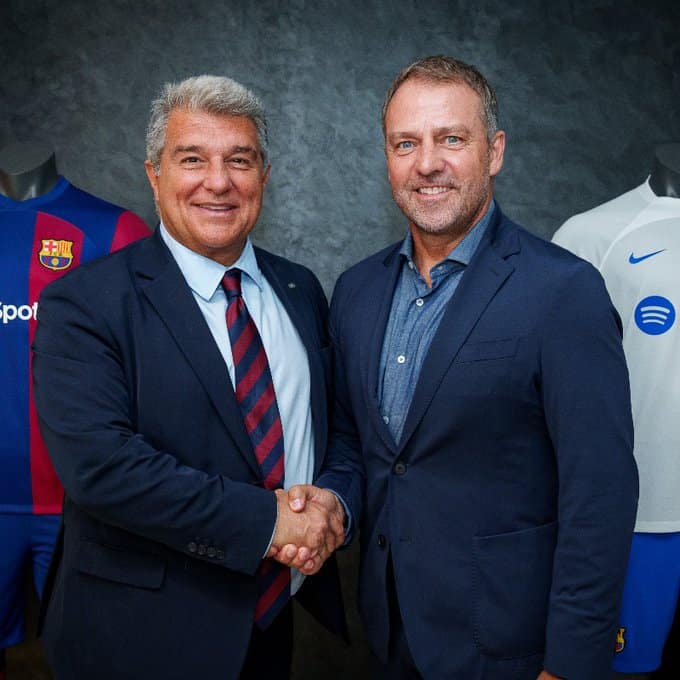
The German strategist succeeds club legend Xavi Hernandez, who was dismissed by Barcelona president Joan Laporta after a disappointing season that concluded without any silverware.
With Flick at the helm, significant changes are anticipated at Barça, ranging from the team’s playing style to training methods and various other facets.
Here’s an in-depth look at what Hansi Flick, a sextuple winner with Bayern Munich, is expected to bring to Barcelona.
Hansi Flick’s Preferred Formation and Tactics
Hansi Flick’s preferred formation is the 4-2-3-1, a structure he utilized at both Bayern Munich and the German national team. This system is likely to be implemented at Barça, although Flick has also employed a three centre-back formation and a 4-3-3 as alternatives.
The 4-2-3-1 formation epitomizes Flick’s coaching philosophy, which is characterized by high intensity, aggressive pressing, and a vertical style of play. His teams are known for pressing high up the pitch and in pairs, aiming to disrupt the opponent’s play from the outset.
The pressing cues under Flick are clear and executed with precision, with each player responsible for defending from the front. If a player advances to challenge the goalkeeper or another opponent, the player behind must cover the space left behind.
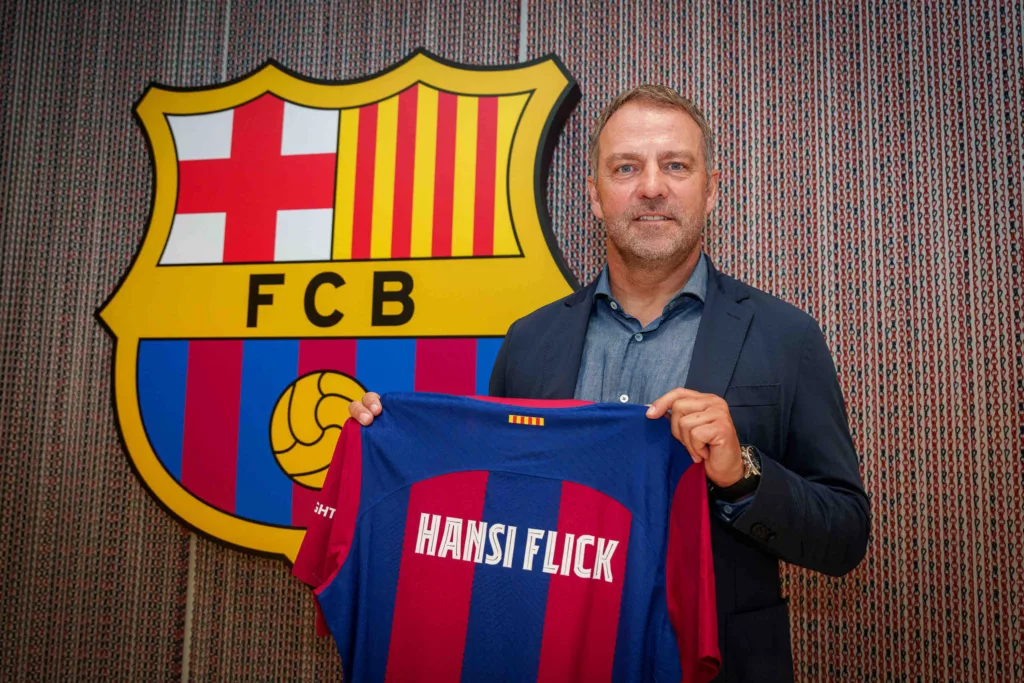
Even when opponents start their play with the goalkeeper, Flick’s teams maintain pressure, with the nearest player tasked with covering the goalkeeper. Barcelona experienced the effectiveness of Flick’s pressing firsthand during the 2020 Champions League quarter-final, where Bayern Munich secured a stunning 8-2 victory. In that match, Bayern forced 48 turnovers, with an average turnover height of 42.2 meters.
Flick is expected to bring this high-intensity, proactive style to Barcelona, potentially transforming their approach to both defense and attack.
Physical Aspect Is A Key Factor For Hansi Flick’s Team
For Flick’s tactical plan to function effectively, it is crucial that the team remains compact and that players possess optimal physical strength to combine their efforts seamlessly. This doesn’t mean the team must be comprised entirely of physical players, but rather that the team as a whole must exhibit considerable power.
Playing Out From the Back
Barcelona adheres to the tradition of playing from the back and prioritizes retaining possession with quick and precise passes. Flick’s teams also aim to build up play from the back but avoid taking excessive risks.

A common exit mechanism in Flick’s system involves center-backs spreading wide, full-backs pushing high, and one midfielder dropping down to collect the ball, while the other remains higher to help set up play. Typically, one of the two midfielders has a creative profile (such as Thiago or Joshua Kimmich at Bayern). The goalkeeper is also involved as an additional player in this build-up process.
How Does A Hansi Flick’s Teams Attack?
On the ball, Flick’s Bayern Munich did not stand out as a highly combinative team but as a team with depth. While a squad featuring players like Thiago, Joshua Kimmich, and Serge Gnabry certainly maintained possession, the primary focus was always on quick attacks.
Flick’s strategy often involved getting the ball to the flanks, allowing wing-backs to engage in one-on-one situations on the outside or drive inside. Speed and dynamism were prioritized in these offensive moves. In the final third, Flick’s priority was not necessarily positional play but seeking decisive actions. Typically, at least three players would occupy the penalty area—a forward, a midfielder, and a wide player from the opposite side.
Flick’s Bayern Munich team of 2019/20 scored 43 goals and averaged 21.9 shots per game in the Champions League, a record that remains unmatched. This approach highlights his preference for aggressive and direct offensive play.
One of the highlights of Barcelona’s 2023/24 season was Lamine Yamal, and much attention will be on Flick’s plans for him in the upcoming campaign. Flick’s preference for wingers with the ability to break through defenses is a significant advantage. At Bayern, he utilized players like Kingsley Coman, Serge Gnabry, and Ivan Perisic, while for Germany in 2020, he called up similar profiles such as Leroy Sane, Jamal Musiala, and Gnabry himself. Thus, Lamine Yamal is expected to continue being a key player.

Flick also leverages the attacking prowess of full-backs who can push forward and track back effectively. This creates numerous 1v1 and 2v1 opportunities on the flanks, where wingers often move inside to open up the wide lanes for the full-backs.
How Does Hansi Flick Like To Defend?
Flick’s offensive proactivity and the need to attack by finishing force his teams to commit many players forward, often leaving ample space behind. This makes them adept at attacking but somewhat vulnerable to counter-attacks.
In the 2019/2020 season, Flick’s Bayern Munich dominated the Bundesliga but conceded 32 goals in 34 games. In the following season, they conceded 44 goals, averaging 1.30 per game. This vulnerability underscores the importance of having powerful defenders capable of covering large spaces, such as Ronald Araujo or Jules Koundé, in Flick’s system.
Other Aspects of Hansi Flick’s Management
One of Flick’s major tasks at Barcelona will be managing a dressing room filled with top players and promising young prospects. The German tactician is known for his effective dressing room management, a quality that will reassure fans. Two factors work in his favor:
First, Flick has experienced all the roles necessary to understand management, having been a footballer, assistant coach, head coach, and sporting director.
Second, he brings valuable experience from managing another major club, Bayern Munich.
Additionally, Flick is known for using video analysis extensively to prepare for matches or correct aspects of the game, enhancing both individual and team performance.

